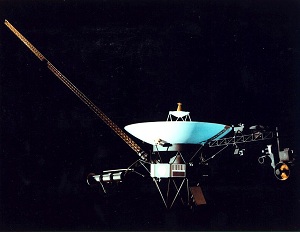The world at large is infatuated by micro-economies. You see it in fashion, in the ‘Web 2.0′ startup world of Silicon Valley and in the MASSIVE yet tiny film production world in Los Angeles. The industries of world business have always been followed by a tide, so to speak, of smaller sub groups. These groups contain their own eco systems of big and small ‘fish’ who provide food for (or feed on) each other to grow, evolve and survive.
The online design and creative community is no different. It has its own cultural and financial ecosystems which are even made of several micro groups within themselves. The consumers of Envato’s marketplaces, the attendees at Carsonified events, Behance’s network, Smashing Magazines readership, Buy-Sell Ad’s advertising and Sitepoints Products are all members of different overlapping groups of a vibrant micro-economy.
But even for the ‘sharks’ of these micro-economic oceans, it can be a helpful to gain some perspective every now and then by swimming past a whale.
 from National Geographic Mini-site
from National Geographic Mini-site
Versace, Gucci, Marc Jacobs and the other ‘whales’ in fashion, set the direction year after year for each season’s fashions. Similarly, the creative world as a whole, moves with waves made by the industry giants.
From the mediums you might offer a client (Web, Print, Mobile Apps) or the essential positioning of the latest design style (can anyone say ‘letterpress’), all the way down to where the expected place for a ‘contact us’ link will go. One only has to look at the similarity in campaigns each year at the ‘Webby Awards’ or watch the commercials on TV, Hulu or passing by you on the side of a bus, to see the influence these creative ‘whales’ have on our day to day lives and ultimately our professions.
So for perspective sake, lets take a quick look at 10 ‘whales’ of the creative industry:

Company: TBWA
Website: http://www.tbwa.com
Principals: Tom Carroll, Jean-Marie Dru, Lee Clow, Denis Streiff, Keith Smith, Laura Coots
Location(s): 100 different countries
Notable clients: Absolut, Jameson, Kahlua, Nissan, Pedigree, Twix, McDonalds, Pfizer, P&G, Apple, Infiniti, Nicorette, Adidas, Alli, Energizer
Est. Number of Employees: 11,000 people operating in 274 agencies
Public/Private: Public
Est. Annual Revenues: $1 Billion+

Company: R/GA
Website: http://www.rga.com
Principals: Chris Colborn, Bob Greenberg, and Nick Law
Location(s): New York, London, San Francisco, Sao Paulo, Singapore, Chicago
Notable clients: NIkeID, NIke Football, Verizon wireless, Ad Council, Nokia, American Eagle,
Est. Number of Employees: 640+
Public/Private: Private
Est. Annual Revenues: Unknown

Company: Saatchi & Saatchi
Website: http://www.saatchi.com
Principals: Kevin Roberts
Location(s): 140 offices – 80 countries
Notable clients: Bel, Deutsche Telekom/T-Mobile, Diageo/Guinness, Emirates Airline, General Mills, Mead Johnson, Novartis, Procter & Gamble, Sony Ericsson, Toyota/Lexus, Visa Europe.
Est. Number of Employees: 6500+
Public/Private: Unknown
Est. Annual Revenues: Unknown

Company: Razorfish
Website: http://www.razorfish.com
Principals: Bob Lord, Lee Sherman, Andreas Gahlert
Location(s): Seattle – 20+ offices worldwide
Notable clients: AT&T Audi Ben & Jerry’s Best Buy Capital One Carnival Cruise Lines Choice Hotels Condé Nast MillerCoors Dell Disney EMC Corporation Forest Labs Investors.com JCPenney Levi Strauss & Co. Kraft Limited Brands
Mattel McDonald’s Mercedes-Benz USA Microsoft/MSN NFL Nike Olympus Oxfam PNC Bank Purina Ralph Lauren Safeco Samsonite Standard Life Bank Starwood Hotels & Resorts Toshiba Travel Channel Victoria’s Secret
Est. Number of Employees: 2000+ worldwide
Public/Private: Unknown
Est. Annual Revenues: Unknown

Company: BBH
Website: http://www.bartleboglehegarty.com
Principals: Greg Anderson, Emma Cookson, Joe Da Silva
Location(s): Global: Europe, Asia Pacific, North America, Latin America, China, India
Notable clients: Axe, Google, Johnnie Walker, Lego, NYC & Co., Smirnoff, Sprite, Vaseline, Ally, British Airways, Westin hotels & resorts
Est. Number of Employees: 235+
Public/Private: Private
Est. Annual Revenues: Unknown

Company: AKQA
Website: http://www.akqa.com
Principals: Stuart Sproule, Guy Wieynk, Jason Warnes, David Bentley, Leo Chu
Location(s): San Francisco, Amsterdam, Berlin, London, New York, D.C., Shanghai
Notable clients: GAP, Smirnoff, Visa, Volkswagen, Warner Brothers, Unilever, Lipton, Ferrari, Nike, Fiat, USPS, Xbox 360
Est. Number of Employees: 550+
Public/Private: Private
Est. Annual Revenues: Unknown

Company: Crispin Porter + Bogusky | CP+B
Website: http://www.cpbgroup.com
Principals: Chuck Porter, Jeff Hicks, Andrew Keller, Rob Reilly, Jeff Steinhour, Eric Lear, Jeff Behjamin, Winston Binch
Location(s): USA, Canada, Europe
Notable clients: Microsoft, Burger King, SAS, Kraft, Baby Carrots, Dominos, Old Navy, Best Buy, Philips, Open, Canadian, Coca Cola Zero, Scania, Telia
Est. Number of Employees: 1,000+
Public/Private: Public
Est. Annual Revenues: $1.6 billion in billings

Company: Smith Harmon – Responsys
Website: http://www.responsys.com
Principals: Dan Springer, Scott Olrich, Andrew Priest, Don Smith, Chris Paul
Location(s): San Bruno, San Francisco, Chicago, New york, Denver, Seattle, UK, Melbourne, Sydney, Denkmark, India
Notable clients: Avis Europe, Continental Airlines, Deutsche Lufthansa, Dollar Thrifty, Lands’ End, LEGO, Men’s Wearhouse, PayPal, Qantas, Southwest Airlines, StubHub, and UnitedHealthcare.
Est. Number of Employees: 308
Public/Private: Private
Est. Annual Revenues: Unknown

Company: BBDO
Website: http://www.BBDO.com
Principals:
Location(s): 287 offices in 79 countries
Notable clients: Gillette, Braun, P&G/Tide, AT&T, Bank of Ireland, BMW, Bridgestone
Est. Number of Employees: 15,000+
Public/Private: Public
Est. Annual Revenues: $1.1 billion ’09

Company: Goodby Silverstein & Partners
Website: http://www.goodbysilverstein.com
Principals: Rich Silverstein, Jeff Goodby, Mark Rurka, Rich Dizon
Location(s): San Francisco
Notable clients: Netflix, Chevy, Specialized, Logitech, Intuit, Frito Lay, Sprint, Doritos, Adobe, Comcast, NBA, HP., Wii, Cheetos, Yahoo, Kayak, Häagen Dazs, Dickies
Est. Number of Employees: 200+
Public/Private: Private
Est. Annual Revenues: Unknown
A quick disclaimer… although many of the companies listed have their roots in Advertising and may be considered ‘traditional advertising companies’, the emergence of web media has blurred the lines of traditional media, so much so, that there are fine lines and nuanced differences between Advertising, Media production, Design & Marketing companies/firms. Most of these listed do all of the above.
Sponsored by

Advertise on Fuel Brand Network.
Fuel Brand Network 2010 cc (creative commons license)
Making Tidal Waves: A look at 10 ‘whales’ of the creative industry





















